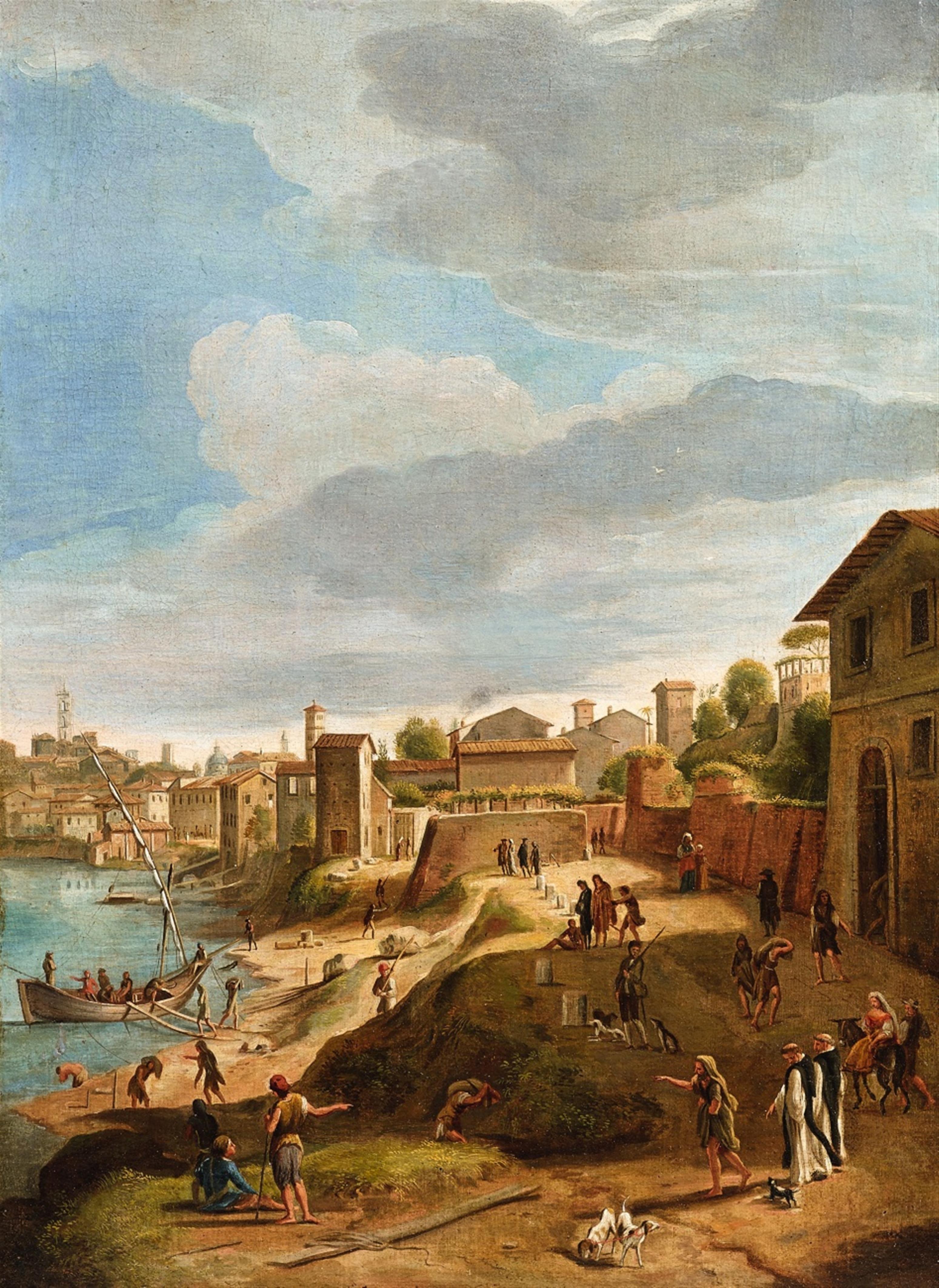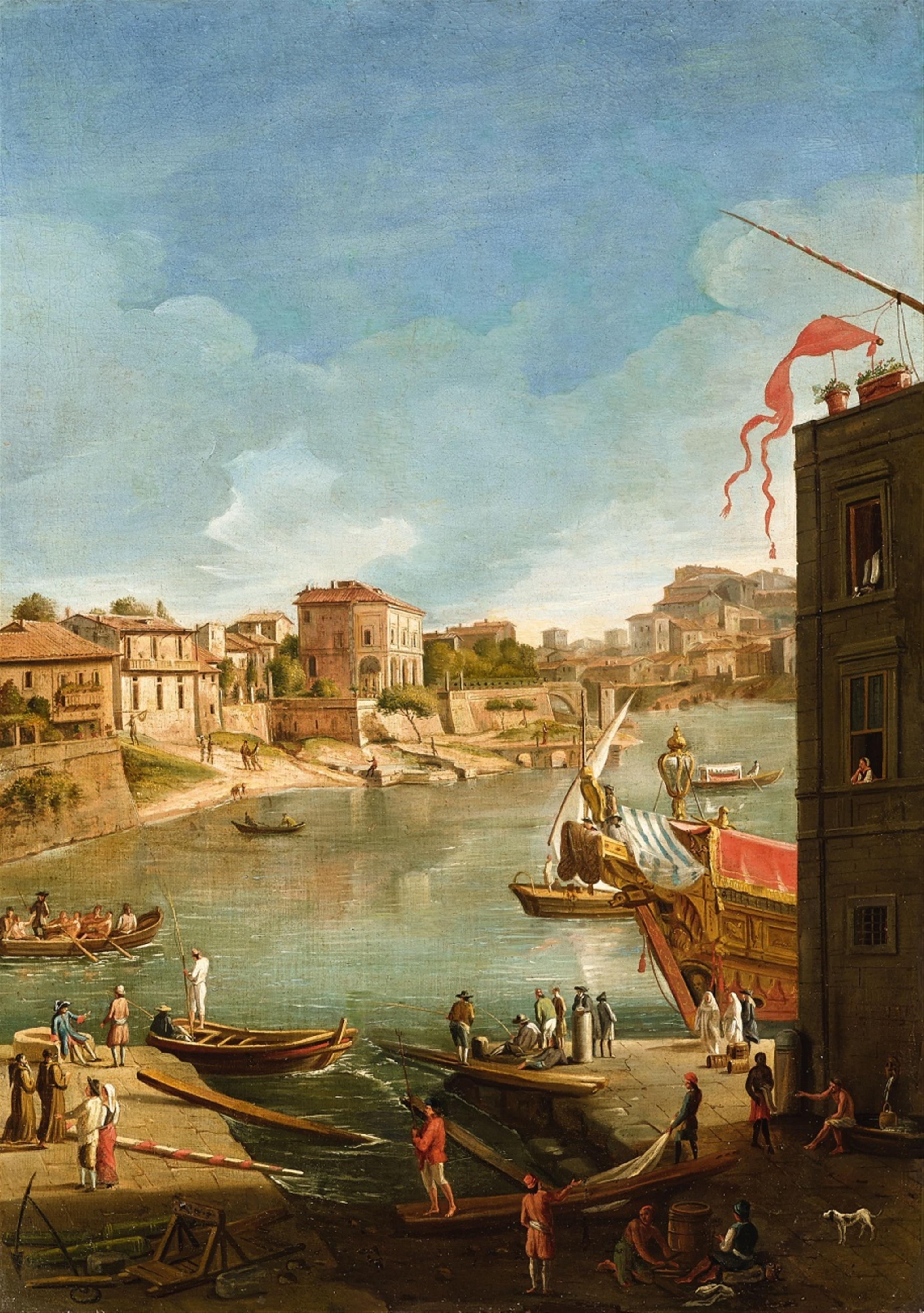Gaspare van Wittel, called Vanvitelli, studio of
View of the Harbour at Ripa Grande View of the Strada di Marmorata at Ripa Grande
Oil on canvas (relined). Each 66.5 x 48.5 cm.
Ripa Grande was considered one of the most picturesque areas of Rome and played a significant role in Roman Vedutismo. Vanvitelli himself, who can be considered the father of veduta painting in Rome, painted several versions of the present view: Evidence of the great fasciation that this location held on artists and their patrons.
The depiction of the right bank is animated by a number of figures inhabiting the Strada di Marmorata, one of the most important commercial streets at the time, which took its name from the quantity of marble unloaded here. The Strada also hosted the saline, salt depots, which are also represented here. Whilst this veduta remains faithful to the actual appearance of the strada at this time, the same can certainly not be said of the view of the right bank. Here, the last stretch of the Harbour of Ripa Grande is visible, together with the Palazzina Pamhilli, its garden, and the ponte Rotto in the distance. The painter has added a fanciful building to the topography of the left bank before its 19th Century reshaping which closes the scene on the right hand, almost as a repoussoir. The same building, with the boat of Ferdinand IV, can be found, in reverse, on other veduta from Vanvitelli's Neapolitan period (Torino, Galleria Sabauda; Berlin, Gemälde Galerie; Venice, Museo Correr).
The present paintings are unsigned and it is not possible to find a direct preparatory drawing (a large sketch representing the Ripa Grande, which was probably the prototype for the various versions, is kept in the Biblioteca Nazionale Centrale in Rome), but they were certainly conceived by a skilful artist close to van Wittel. The playful depiction of the figures busy in their daily activities, the skilled rendering of architecture and atmospheric effects are the product of an accomplished painter who knew Vanvitelli's Roman and Neapolitan works well.




